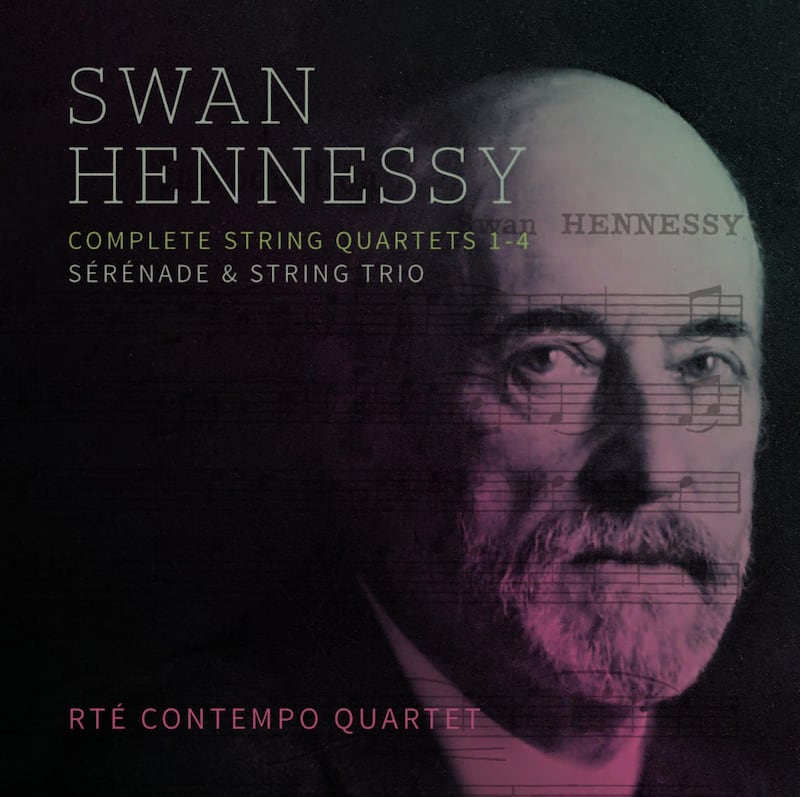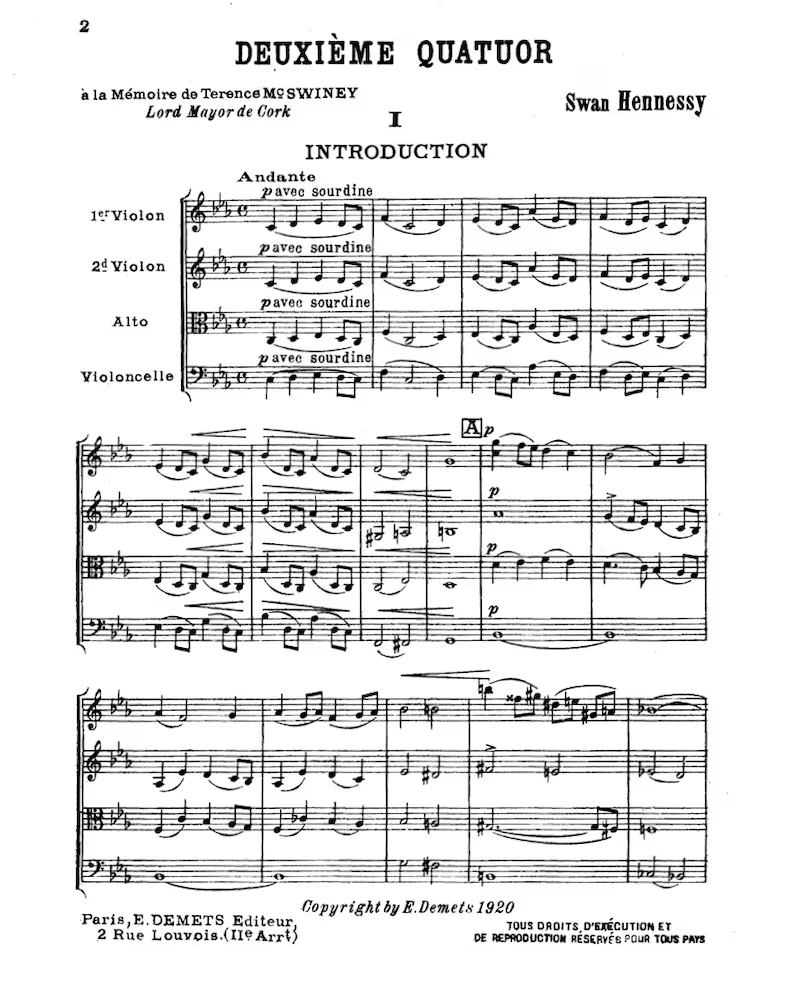A cursory glance at the cover image of the latest CD from RTÉ Lyric FM might suggest that the broadcaster has decided to espouse the cause of US composer Charles Ives. But, no. The bald, trimly-bearded man gazing out is Irish-American, Swan Hennessy, who was born in Rockford, Illinois, in 1866 and died in Paris in 1929.
The Irish connection is that Hennessy’s father was from Cork, The composer – whose first name was Edward but who was called Swan after his mother’s maiden name – was educated in Oxford and Stuttgart. His early work is described as Schumannesque and the music he is known for today, in so far as it is known at all, was written after he settled in Paris around the turn of the century.
German musicologist Axel Klein, who wrote the notes for the CD and is working on a book about Hennessy, says the composer "must rank as one of the most unknown among the unknown composers of the early 20th century".

It’s hard to disagree. Hennessy hasn’t had an entry in any edition of the New Grove Dictionary of Music and Musicians, not even in the expanded American Music edition of 2013; nor is he listed in the Encyclopaedia of Music in Ireland of the same year.
He does have a three-line listing in the 1938 International Cyclopedia of Music and Musicians (where his place of birth is given as Dublin), and there is more extended, and corrected entry in that book’s successor, Baker’s Biographical Dictionary of Musicians in 2001.
He fares better in some reference works in French and German, and Maurice Hinson’s Guide to the Pianist’s Repertoire says he “wrote in an Impressionist style” and lists some late piano pieces, pastiches under the title À la manière de ..., an obvious follow-on from Ravel, who wrote a pair of pieces after Borodin and Chabrier in 1913.
Hinson is right about the French musical influence, but misses out on the Irish concerns in Hennessy’s work. There are numerous works with the description “Celtique” in the title, even a set of two saxophone pieces, one called Pièce Celtique, the other titled simply Jazz.

Hennessy's Irish connections were obviously well known to Dublin-born Victor Herbert, who was a force to be reckoned with in New York in the late 19th and early 20th centuries. He composed a string of successful operettas and in the 1890s his Second Cello Concerto had an influence on Dvorak's Cello Concerto (Dvorak went to hear Herbert's concerto two days in a row). Herbert also led the cello section of the New York Philharmonic in the first performance of Dvorak's New World Symphony.
Herbert, conducting his own orchestra, included works by Hennessy in three Carnegie Hall concerts in 1913, 1916 and 1917: a Gaelic Society Feis Ceoil agus Seanacha programme in 1913; an Irish Relief Fund benefit, which raised more than $10,000 on May 27th, 1916; and an Irish Republican Anniversary Concert, with Clann na nGael and Cumann na mBan, on April 8th, 1917.
Incredible as it may seem, Hennessy’s music featured in George Gershwin’s first appearance as a concert pianist in New York in 1923. The Recital of Ancient and Modern Music for Voice featured the mezzo-soprano Éva Gauthier, and she sang two of Hennessy’s Trois Chansons Espagnoles, though it was Max Jaffe rather than Gershwin himself who accompanied her on the piano; the programme also included works by Bartók, Hindemith, Schoenberg, Bliss, Milhaud and Delage.
Hennessy’s Petite Trio Celtique was performed at the Engineers’ Hall on Dublin’s Dawson Street in March 1922, in a concert in aid of St Ultan’s Infant Hospital. This paper’s enthusiastic review described it as being “extraordinarily rich in musical feeling and most definitely original,” and the paper included him in a feature on Prominent Irish Personalities at the end of December 1929.
The work that opens the new CD by the RTÉ Contempo String Quartet is Hennessy’s Second Quartet of 1920, which carries a dedication “à la Mémoire de Terence McSwiney, Lord Mayor de Cork”. McSwiney, a Sinn Féin MP was tried and sentenced for sedition and his death, after a 74-day hunger strike in Brixton Prison in 1920, made international headlines.
The Contempos bring the quartet’s sombre opening movement fully into the sound world of Debussy and Ravel, and their delicate and tonally-sophisticated approach is well matched to the mild manner of Hennessy’s style. In their hands there’s something about even Hennessy’s most energised moments that speaks more of private musings than public statements.
Hennessy’s string quartets are all from the later years of his career – they were written in 1912, 1920, 1923 and 1928 – and the two other works are a 1924 Sérénade for string quartet, and the Petit Trio Celtique of 1920, for string trio which, says Klein, was the composer’s most frequently played work during his lifetime.
This well-documented and impeccably tasteful CD documents a body of work in Irish musical history that has lain neglected for almost 90 years.












